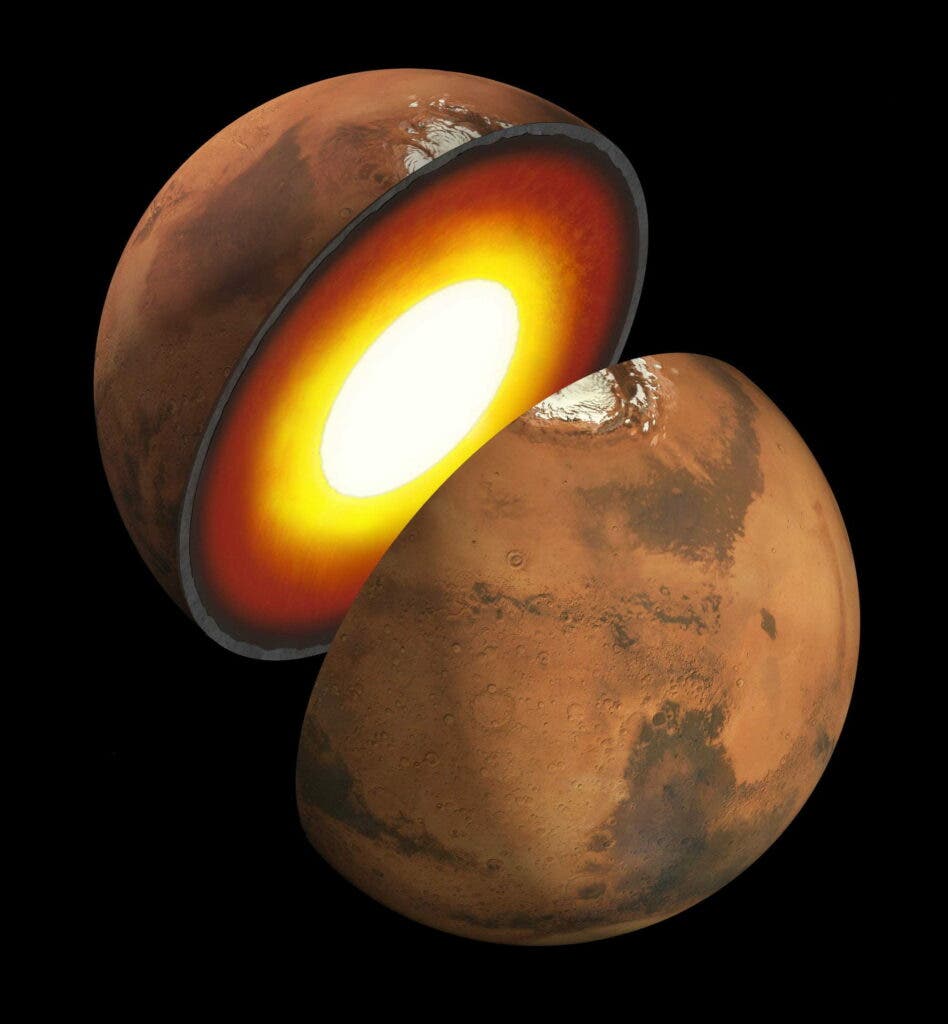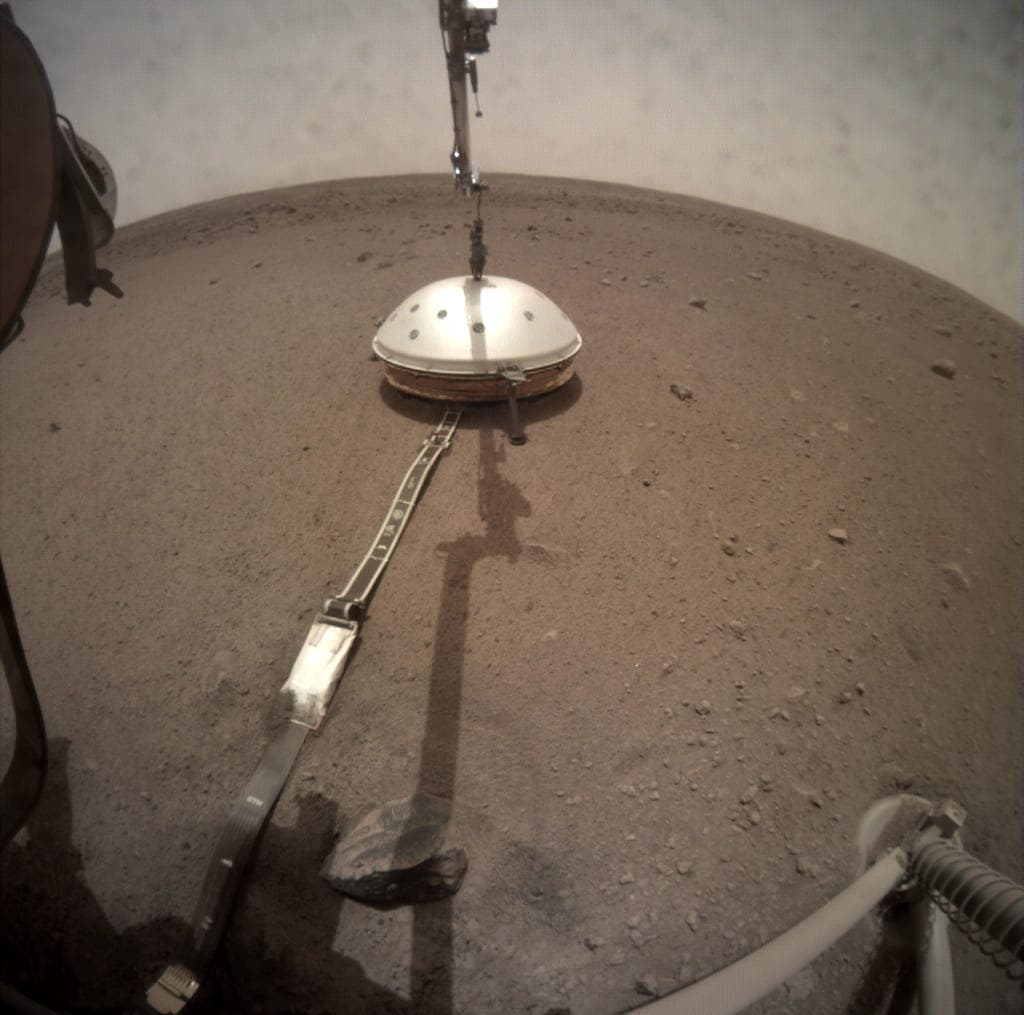
Although scientists had suspected that Mars has its fair share of earthquakes, it was only on April 6, 2019, that these were confirmed by the seismometers onboard NASA’s InSight Mars lander. Since then more than 500 subsequent events have been detected, which have helped scientists peel apart the red planet’s boundary layers like an onion.
According to a new study led by seismologists at Rice University, Mars has three subsurface boundaries from the crust to its core.
“Ultimately it may help us understand planetary formation,” said Alan Levander, co-author of the new study that was published in the Geophysical Research Letters.
On Earth, earthquakes are mainly generated by the movement of tectonic plates that constantly shift beneath our feet. As these subsurface plates grind together, they generate seismic waves that reverberate through rock, magma, and metals deep inside our planet.
When scientists record seismic waves, they also record the telltale signature of whatever material these waves had passed through from their point of origin to the point of recording. Without having to dig two inches, scientists can thus infer what the planet’s interior is like with mind-boggling precision.
On Mars, seismic activity happens for an entirely different reason. Although it doesn’t have tectonic plates, marsquakes are produced by the planet’s cooling and contracting. Just like on the moon, meteoroid impacts are also believed to play a role, generating seismic waves around the planet.
Previously, researchers were able to calculate the thickness of the Martian crust and the depth of its core, but it wasn’t until they had their hands on InSight data that they could perform the first direct measurements. However, this was still very challenging when compared to seismometry on Earth.
“The traditional way to investigate structures beneath Earth is to analyze earthquake signals using dense networks of seismic stations,” said study co-author Sizhuang Deng, a Rice graduate student.. “Mars is much less tectonically active, which means it will have far fewer marsquake events compared with Earth. Moreover, with only one seismic station on Mars, we cannot employ methods that rely on seismic networks.”

The team of researchers employed a technique called ambient noise autocorrection on the Martian seismic data, which “uses continuous noise data recorded by the single seismic station on Mars to extract pronounced reflection signals from seismic boundaries,” Deng said.
Deng and Lavender identified an initial layer that divides Mars’ crust and mantle, located about 35 kilometers beneath the lander’s domed covered seismometer. Within the mantle, a second transition zone was identified, characterized by magnesium iron silicate that undergo geochemical change. Right above this layer, the silicates form a mineral called olivine, while beneath it, higher heat and pressure compress them into a mineral called wadsleyite.
“The temperature at the olivine-wadsleyite transition is an important key to building thermal models of Mars,” Deng said. “From the depth of the transition, we can easily calculate the pressure, and with that, we can derive the temperature.”
The third and final boundary layer is at the border between Mars’ mantle and its iron-rich core, located about 1,550 kilometers beneath the planet’s surface.
In the future, this information will prove useful in improving scientists’ understanding of how Mars formed and developed over time.



